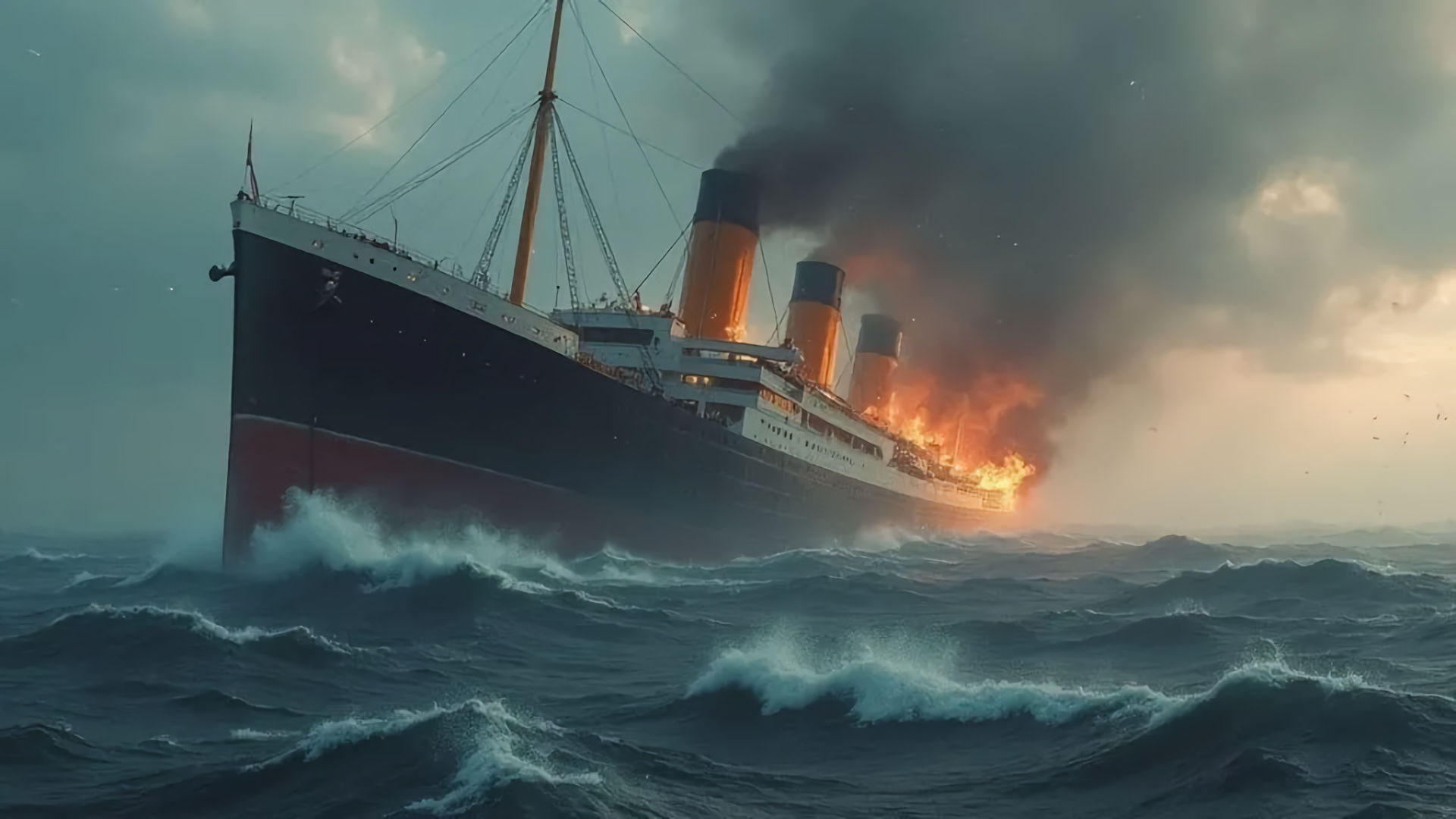The Sinking of the RMS Lusitania
On 7 May 1915, the RMS Lusitania was struck by a German U-boat torpedo off the coast of Ireland, leading to one of the most infamous maritime disasters in history. The British ocean liner, en route from New York to Liverpool, sank in just 18 minutes, taking 1,198 lives with her. The event had profound repercussions, influencing public opinion and diplomatic relations during the First World War.
The RMS Lusitania was launched in 1906 by the Cunard Line, a company renowned for its luxurious and technologically advanced ships. At the time of her maiden voyage, she was the world’s largest and fastest passenger ship, capable of crossing the Atlantic in under five days. Her impressive speed, reaching up to 25 knots, earned her the prestigious Blue Riband for the fastest transatlantic crossing. Designed for both luxury and efficiency, she catered to first-class passengers with opulent suites, while also providing comfortable accommodation for emigrants seeking a new life in the United States.
Despite her commercial purpose, the Lusitania was also constructed with war in mind. The British Admiralty had partly subsidised her construction under the understanding that she could be converted into an armed cruiser if necessary. Though she remained a passenger liner throughout her service, her ability to carry ammunition and military supplies made her a potential target in wartime.
By 1915, the First World War was raging, and Germany had declared the waters around Britain a war zone. German U-boats patrolled the Atlantic, targeting Allied and neutral ships believed to be carrying war materials. The British government, in turn, implemented a blockade of Germany, cutting off crucial supplies. In response, Germany adopted a policy of unrestricted submarine warfare, sinking ships without warning. The Lusitania’s scheduled voyage across the Atlantic placed her directly in harm’s way.
Prior to the Lusitania’s departure, the German Embassy in the United States issued a public warning, advising passengers not to travel on British ships due to the risks posed by German submarines. Many dismissed the threat, believing that a passenger liner carrying civilians would not be deliberately targeted. However, the war had already seen escalating attacks on merchant and civilian vessels, making the dangers of transatlantic travel increasingly apparent.
On 1 May 1915, the Lusitania departed New York with 1,959 passengers and crew on board. Among them were men, women, and children from various nationalities, including 128 American citizens. As she approached the Irish coast on 7 May, she entered an area known to be patrolled by German U-boats. Despite receiving warnings of submarine activity, the ship continued at a reduced speed due to concerns about fuel efficiency.
At 2:10 pm, German U-boat U-20, commanded by Captain Walther Schwieger, spotted the Lusitania. Seizing the opportunity, Schwieger ordered a single torpedo to be fired at the liner. The torpedo struck the starboard side, creating an explosion that was followed almost immediately by a second, larger detonation. The exact cause of this secondary explosion remains debated, with theories ranging from the ignition of coal dust to the detonation of hidden munitions stored in the cargo hold.
Within minutes, the Lusitania began listing heavily to one side, making it difficult for lifeboats to be launched. Passengers and crew scrambled to abandon ship, but the speed at which she sank left little time for an organised evacuation. Many lifeboats were unable to deploy properly, and those that did were often overcrowded or capsized in the chaos. Survivors described harrowing scenes of people being thrown into the water, struggling against the strong currents and freezing temperatures.
Rescue efforts were swift but ultimately limited. Nearby vessels rushed to assist, pulling as many survivors from the water as possible. However, by the time help arrived, the majority of those on board had already perished. In total, 1,198 lives were lost, including civilians, prominent figures, and 128 American citizens. The sinking of the Lusitania sent shockwaves around the world, sparking outrage, particularly in Britain and the United States.
The incident had significant diplomatic consequences. In the United States, public opinion shifted sharply against Germany, intensifying debates over whether the nation should enter the war. Although the United States did not immediately join the conflict, the sinking of the Lusitania contributed to growing tensions that ultimately led to America’s declaration of war in 1917. The British government used the tragedy as powerful propaganda, portraying the attack as an act of barbarism and reinforcing anti-German sentiment.
The German government defended the attack, arguing that the Lusitania was carrying military supplies, making her a legitimate target. British authorities denied these claims at the time, insisting the ship was purely a civilian vessel. However, decades later, evidence emerged suggesting that the Lusitania had indeed been transporting munitions, adding complexity to the historical debate over her sinking.
The Lusitania disaster prompted changes in naval warfare and maritime safety regulations. The controversy surrounding the attack led to a temporary halt in unrestricted submarine warfare, as Germany sought to avoid further diplomatic fallout. The incident also underscored the need for improved lifeboat drills and better emergency preparedness on passenger ships, influencing future maritime policies.
In the years following the disaster, numerous salvage operations and explorations of the wreck were conducted. The Lusitania remains a haunting relic on the seabed, lying 300 feet below the surface off the coast of Ireland. Today, the site is protected as a designated maritime heritage location, preserving the memory of those who perished. The sinking of the RMS Lusitania remains one of the most significant maritime disasters in history, not only for its immense loss of life but also for its far-reaching political and military consequences. The tragedy highlighted the brutal realities of modern warfare, challenging the notion that civilian vessels were safe from conflict. It served as a catalyst for major geopolitical shifts and remains a powerful reminder of the human cost of war. The legacy of the Lusitania endures, ensuring that the lessons of that fateful day continue to be studied and remembered.
The Sinking of the RMS Lusitania FAQ
On 7 May 1915, the RMS Lusitania was torpedoed by a German U-boat off the coast of Ireland, sinking within 18 minutes and killing nearly 1,200 people.
Germany suspected the Lusitania was carrying war materials for Britain during World War I, leading to its attack as part of Germany’s unrestricted submarine warfare campaign.
Of the 1,959 people on board, 1,198 were killed, including civilians and American passengers, sparking international outrage.
The disaster intensified anti-German sentiment, influenced U.S. public opinion, and is considered a key event that contributed to America’s entry into World War I.
[this article originally appeared on 5MinuteDisasters.com on 21 June 2025]






